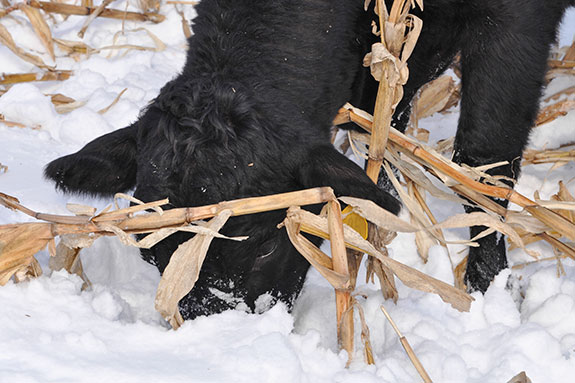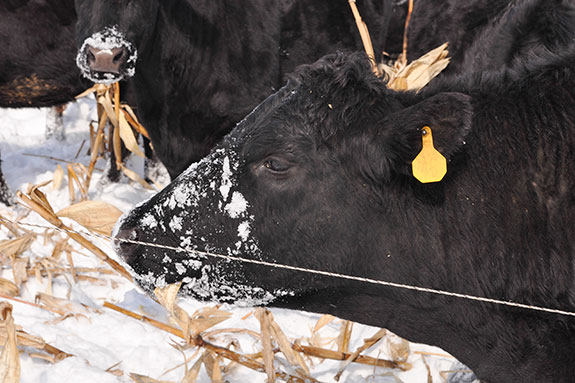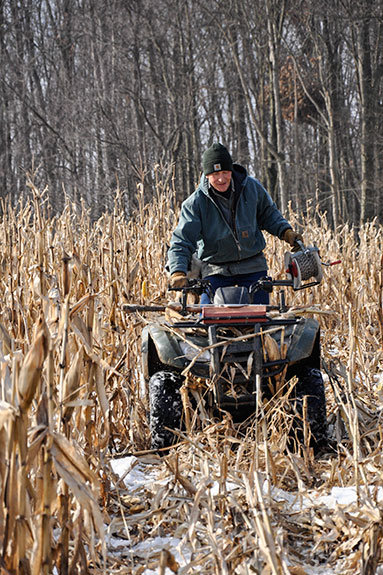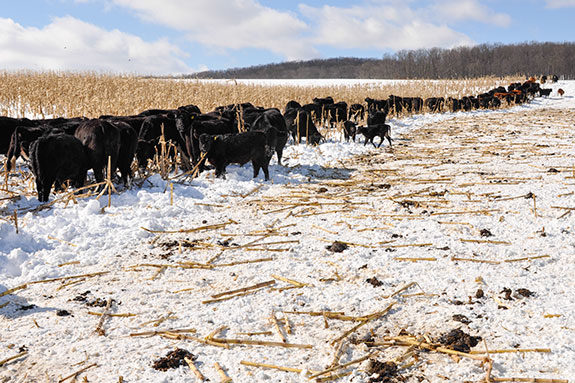A sudden death in the family and sky-high inheritance taxes had caused the family operation to have to sell all the cattle and equipment in its possession.
During this period of time, literature on rotational grazing or grass-fed beef was next to non-existent.
"I had no equipment and I was gone several days a week," says Lake. "I decided that since cows had four legs and I only had two, maybe they could do the work instead of me."
Starting out with two sale barn yearlings of unknown origin, Lake took the plunge into grass-based cattle farming.

Over the years he's tried many cattle breeds, both Old English-style breeds and Continental, finally settling on moderate-framed Black and Red Angus with the occasional Hereford-cross thrown into the mix.
"I knew nothing of endophytes or rotational grazing practices or grass-based genetics," Lake will tell you when asked about how he got started.
"Consequently, I’ve learned by making about every mistake in the book both with genetics and grasses, and that’s why I don’t mind sharing my experience."
Even with his inexperience at the start, Lake was certain of one thing – he wanted more life back in his soil. In his terms this is done through "earthworms and microbial activity rather than plowshares and insecticides."
Currently, Lake grazes around 110 cow-calf pairs. Calves from his cowherd along with about 80 feeders annually are finished in his grass-fed beef program with the meat produced going to several large retailers.
The lack of equipment pushed Lake to take a different approach to how he feeds his cowherd throughout the winter.

Over the years, he developed a unique system which allows him to graze his cow herd throughout the winter, greatly reducing his need for winter hay feeding.
"My favorite winter feed for a cow-calf operation in the north is standing corn," he says.
While his particular area of Pennsylvania rarely gets more than two feet of snow at a time, there is often a lot of drifting. With standing corn the cows are still able to get all of the feed they need.
After calves are weaned in the fall and moved to the feeder herd, cows are strip grazed on standing corn.
"A cow with good grass genetics will only lose about a half of a body score point through the winter on corn," says Lake. "They will eat the ear, husk, cob and all, and about half the stalk."
Approximately 30 to 35 acres are planted each year, and Lake will tell you the variety used is very important. He specifically uses a variety of non-GMO corn which has a high-sugar stalk with lots of leaves.

If winters are dry or snowy, Lake will move his cows once daily, with each move taking about 15 to 20 minutes.
If winters are wet, as has been the case for the past few years in the Northeast, more frequent moves at shorter distances, sometimes up to five times a day, will be made.
The more frequent moves prevent the cattle from stomping the leaves of the corn into the mud since the cows will eat the ears first.
Lake stands by his tried-and-true grazing management system of 30-plus years, saying, "If you plan your grasses to match the seasonal needs for a particular area, especially for a cow-calf operation, you can graze year-round." FG
Jesse Bussard is a freelance writer based in Bozeman, Montana.
PHOTOS
Photos provided by Jesse Bussard.











